Cats may be cute and cuddly, but some breeds pack a serious punch when it comes to aggressive behavior. Whether you’re a potential cat owner or just curious about feline temperaments, this guide will walk you through the 15 most aggressive domestic cat breeds. From vocal vixens to wild childs, these cats are known for their feisty personalities and potential for aggressive outbursts. Remember, while breed tendencies exist, every cat is an individual, and proper care and training can help manage these behaviors.
Siamese
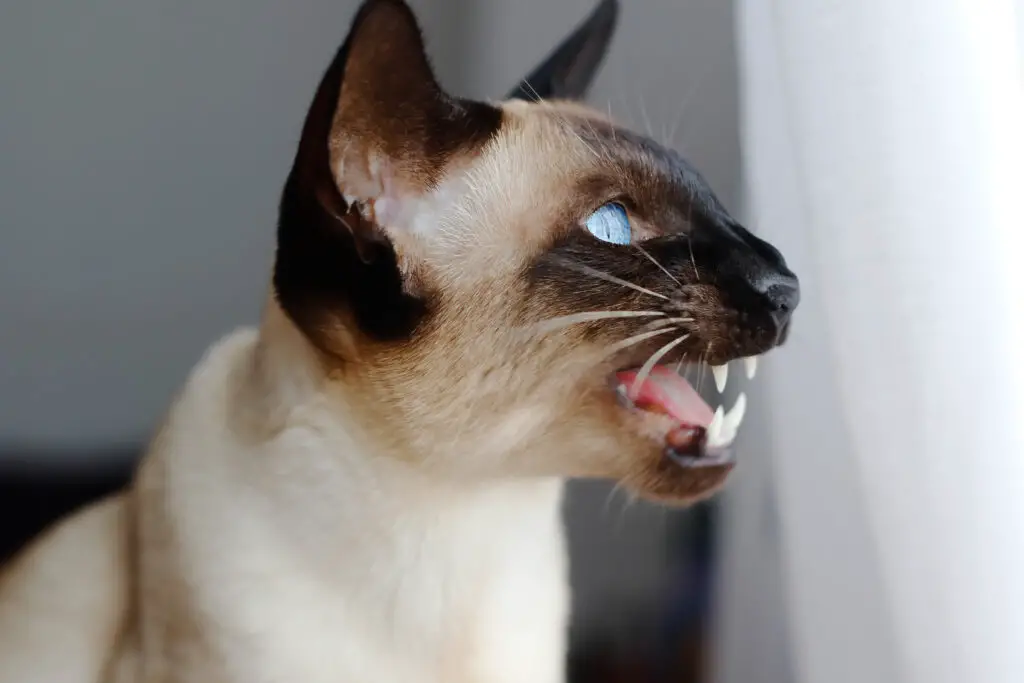
Siamese cats top aggressive breed lists with their striking blue eyes and vocal nature. According to the Journal of Veterinary Behavior, their intelligence and strong bonds can lead to jealousy and territorial behavior. Their vocal range spans from soft chirps to ear-piercing yowls, often escalating to aggressive vocalizations when displeased.
Cornell Feline Health Center notes that these cats deliver full-blown operas, not just meows. Their “love bites” can escalate from playful nips to painful chomps quickly. To prevent your Siamese from becoming a household tyrant, provide ample attention, interactive toys, and climbing structures. A bored Siamese is a ticking time bomb of mischief and potential aggression.
Bengal: The Wild Child
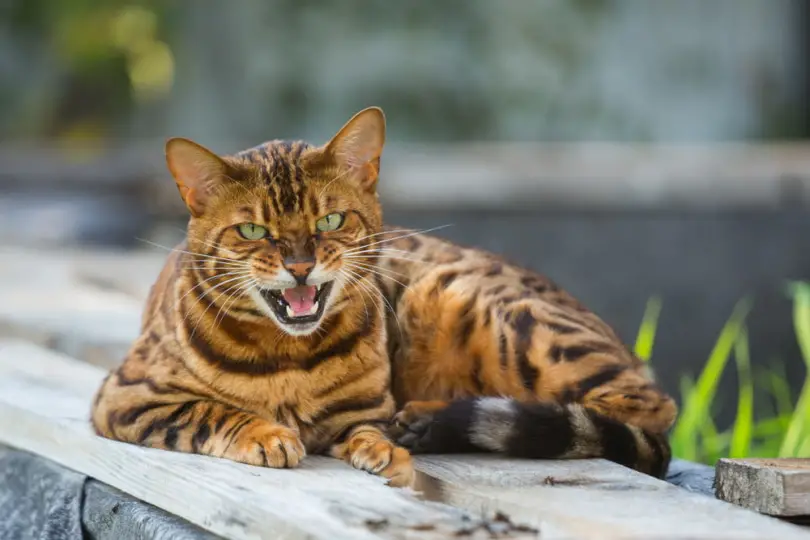
Bengals, a cross between domestic cats and Asian Leopard Cats, rank high in aggression. The Journal of Feline Medicine and Surgery
reports that their wild ancestry contributes to high energy and potential for aggressive play. Their strong prey drive can lead to aggression towards smaller pets or children if not socialized.
Research published in Animals (MDPI)) suggests these parkour artists treat furniture like a jungle gym. Without proper outlets, Bengals may express frustration through scratching, biting, or home “redecorating.” Puzzle feeders, interactive toys, and supervised outdoor time can help channel their energy positively. A Bengal’s energy makes caffeine look tame.
Turkish Van: The Aquatic Attacker
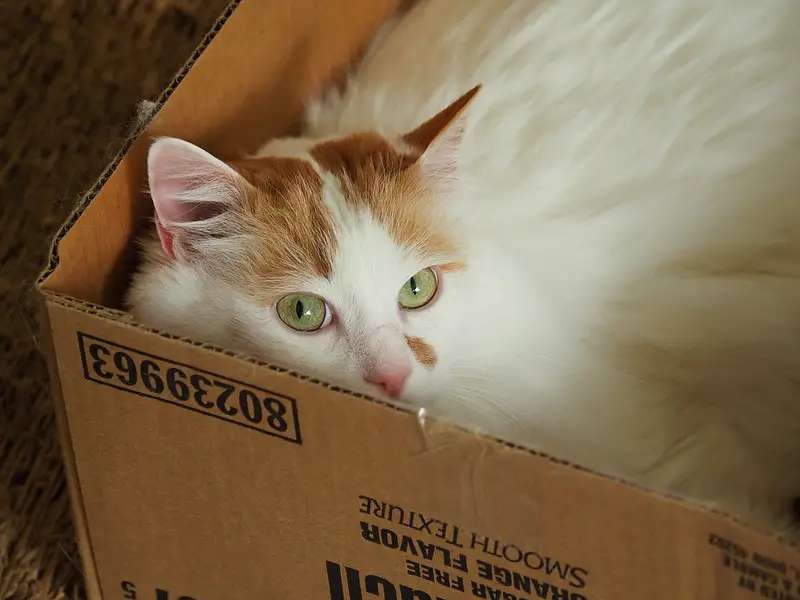
Turkish Vans top the list for aggression towards humans and other cats, according to a study in the Journal of Veterinary Behavior. Known for unique coloration and water love, they prefer being the only feline. Early socialization is crucial for these muscular and agile fighters.
The Cornell Feline Health Center reports that unlike many cats, Turkish Vans enjoy water, but this can lead to aggressive behavior if cornered in their watery domain. Provide vertical space and hiding spots to minimize aggression. Regular play mimicking hunting behaviors satisfies predatory instincts. Be prepared for rough playtime – thick gloves might become necessary.
Egyptian Mau: The Pharaoh’s Fury
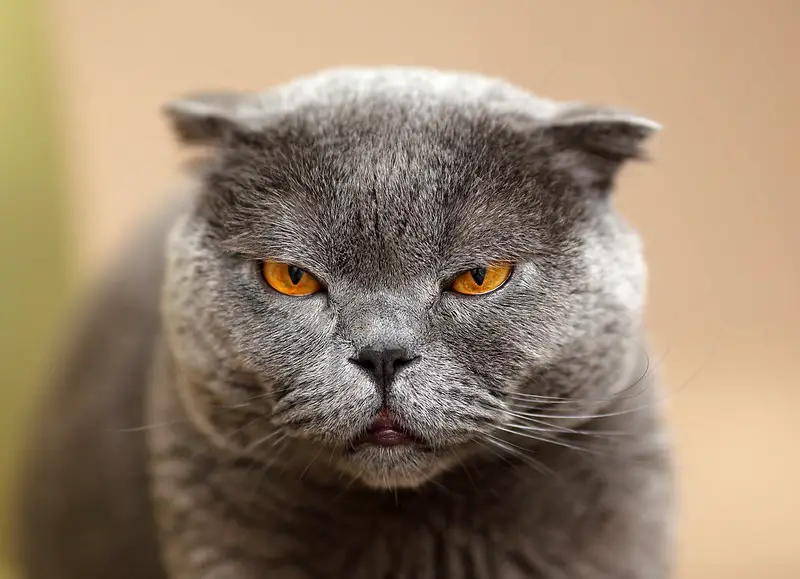
Egyptian Maus, with ancient lineage, are fiercely protective and exceptionally fast, running up to 30 mph, as noted in the Journal of Feline Medicine and Surgery While gentle with family, they may become aggressive over possessions. Their strong prey drive and quick reflexes can lead to rough play.
Research in Animals (MDPI) suggests these cats view your home as their kingdom, with invisible boundaries. Crossing these lines might result in swift, royal reprimands. Provide ample exercise and mental stimulation. Interactive “hunting” toys are effective in managing their aggressive tendencies and satisfying their pharaoh-like demands.
Sphynx
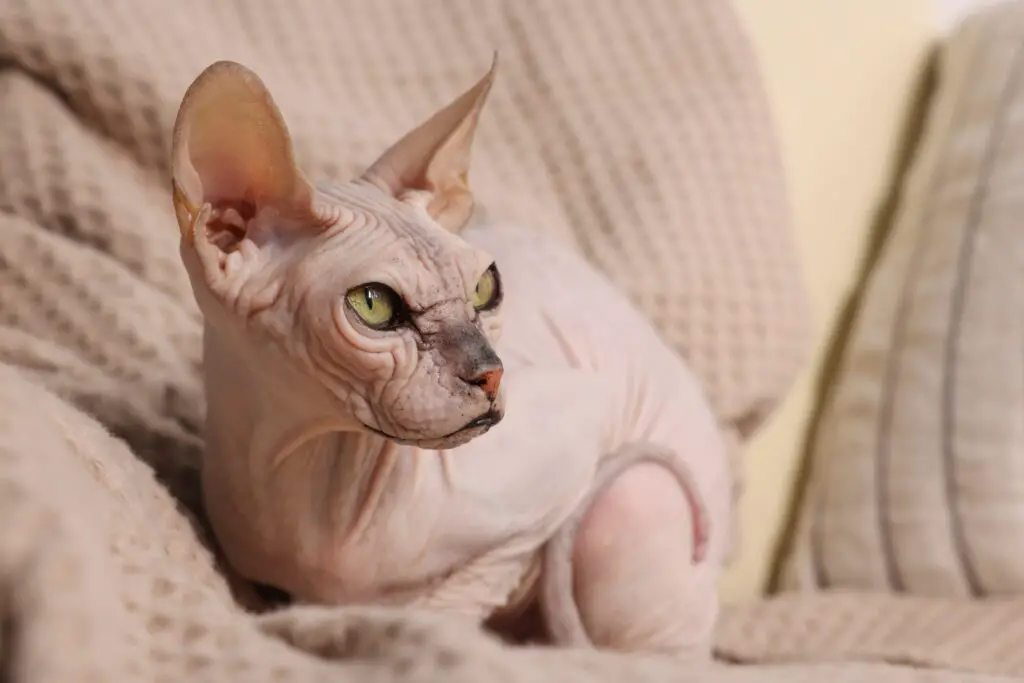
Sphynx cats, despite their hairless appearance, rank high in aggression due to their high energy and demanding nature, according to the Journal of Veterinary Behavior
. They crave attention and may use claws and teeth if ignored. Their lack of fur drives them to seek warmth, often leading to clingy behavior.
The Cornell Feline Health Center reports that these cats will go to great lengths for attention, including using sharp claws and teeth if feeling ignored. “Love bites” can escalate quickly if not trained properly. Be ready for a cat that’s as high-maintenance as it is hairless, and as aggressive as it is attention-seeking.
Korat
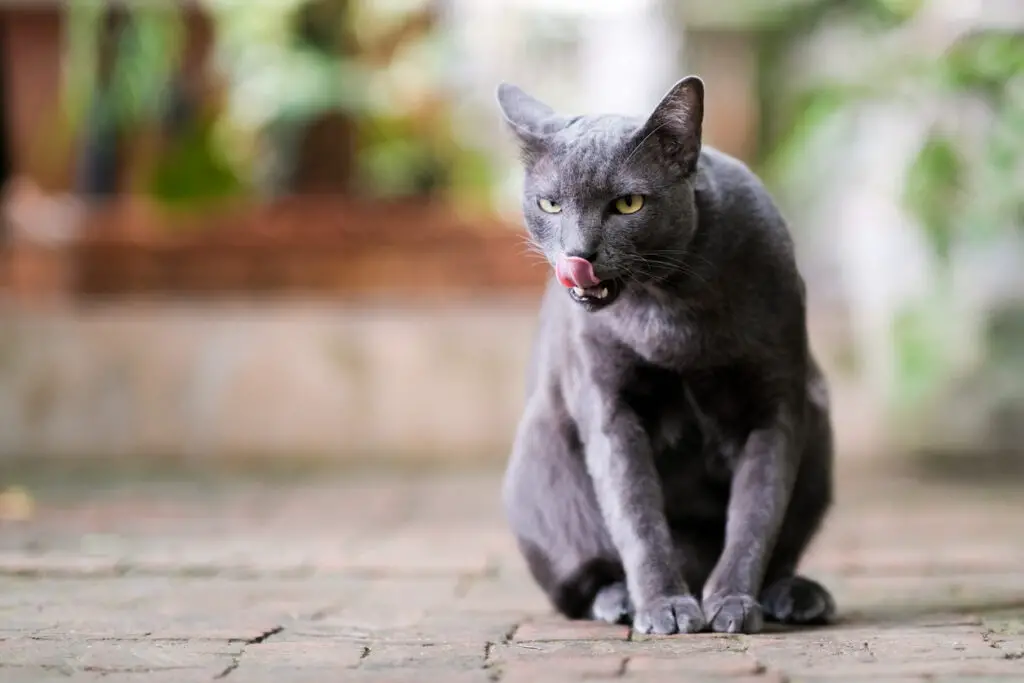
Korats, originating from Thailand, are easily spooked, triggering a fight response, as noted in the Journal of Feline Medicine and Surgery
. Their silver coat belies a fiery temperament. They’re known to hiss and growl at children and strangers, especially if they’re on the louder side. Early socialization and a calm environment are crucial for managing their reactive tendencies.
Research in Animals (MDPI) indicates these cats have strong territorial instincts that can lead to aggressive displays if they feel threatened. Their possessive nature extends to toys, food, and even their humans. To keep a Korat happy and less prone to aggressive outbursts, provide plenty of interactive toys, climbing structures, and daily play sessions.
Bombay
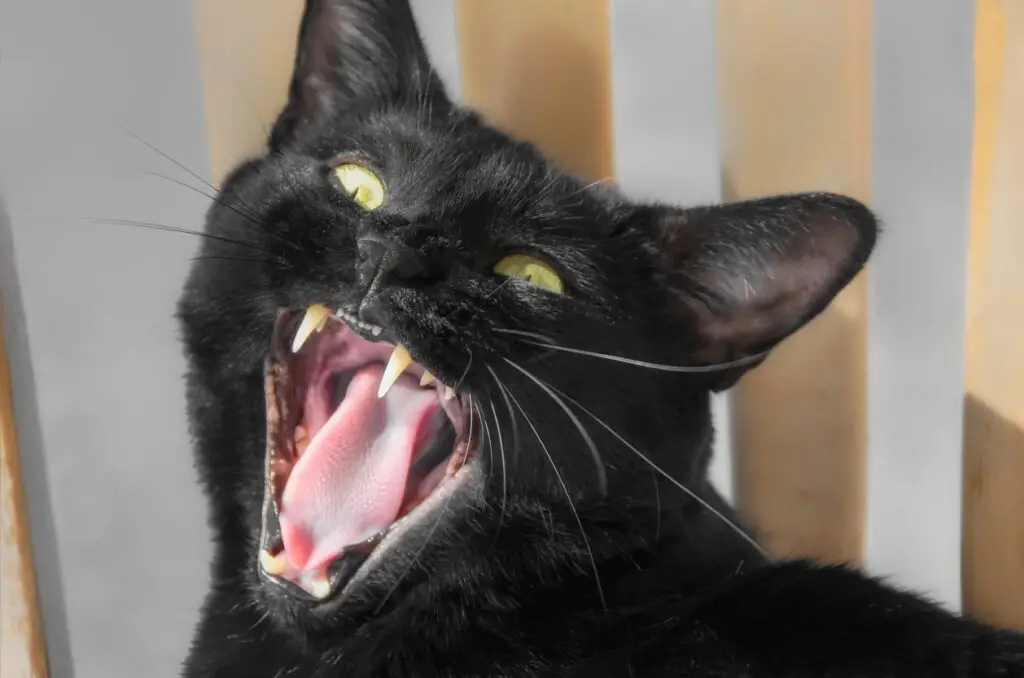
Bombays, resembling miniature panthers, are known for their feisty nature. The Journal of Veterinary Behavior
reports that their high intelligence requires constant stimulation to prevent destructive behaviors. They form strong bonds with their owners but can be territorial with other pets.
According to the Cornell Feline Health Center, these cats are easily startled by loud noises, which can lead to unexpected claw-filled encounters. Their high intelligence means they get bored easily, and a bored Bombay is a recipe for disaster. Expect to find your belongings rearranged, your plants uprooted, and possibly your furniture reupholstered – with claw marks.
Pixie-Bob
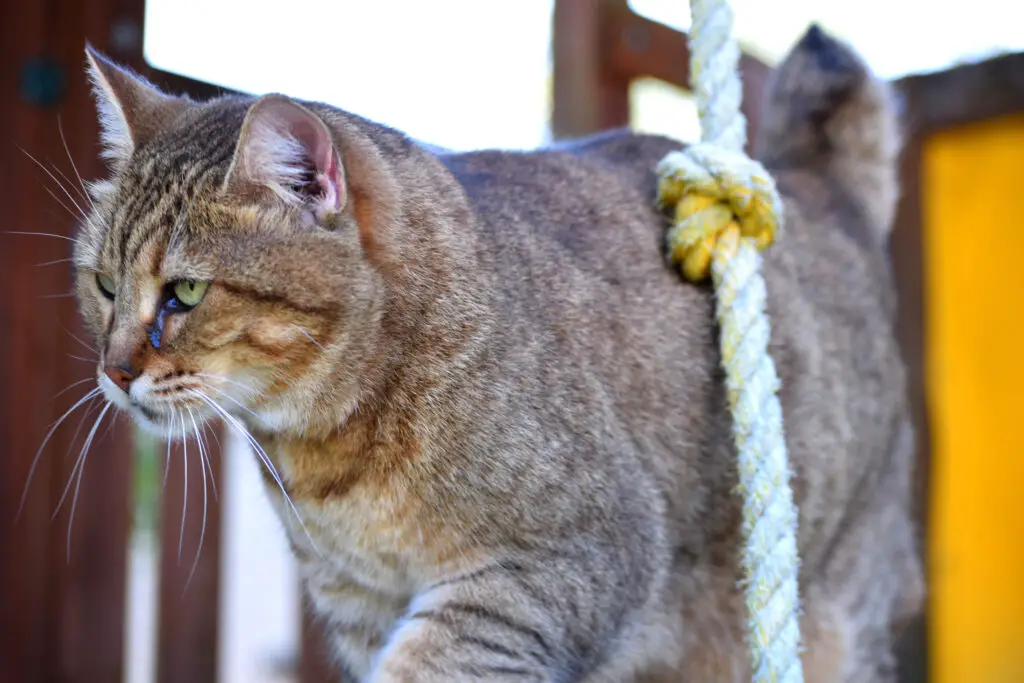
Pixie-Bobs, often mistaken for small bobcats, have a reputation for wild behavior. The Journal of Feline Medicine and Surgery
reports their high energy levels and strong prey drive can lead to aggressive hunting behaviors if not properly channeled. Early training and socialization are key to managing their wilder instincts.
Research in Animals (MDPI) suggests these cats’ robust build and athletic prowess mean playtime can quickly escalate to roughhousing. Their idea of “play” might leave you wondering if you’ve adopted a bobcat by mistake. Provide plenty of climbing opportunities and interactive toys to keep them engaged and less prone to aggressive outbursts.
Abyssinian
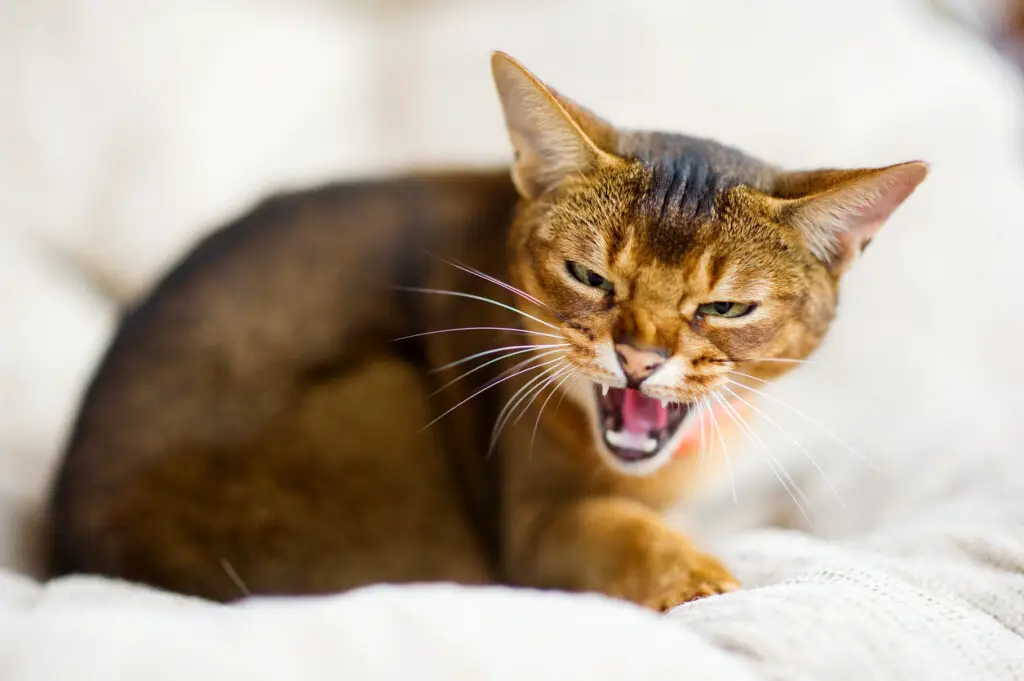
Abyssinians are known for their high energy and potential for aggressive play, according to the Journal of Veterinary Behavior
. Their intelligence can lead to mischievous actions if bored. Provide plenty of climbing opportunities and interactive toys to keep them engaged and less prone to aggressive outbursts.
The Cornell Feline Health Center warns that an under-stimulated Abyssinian can turn your home into a feline parkour course. These cats don’t just climb curtains; they’ll swing from chandeliers and backflip off bookshelves for fun. Their agility and speed make them prone to ambush-style play, which can be startling or even painful for unsuspecting humans.
Scottish Fold

Despite their cute appearance, Scottish Folds can display unexpected aggression. The Journal of Feline Medicine and Surgery attributes this to potential pain from their genetic mutation. They may become territorial over favorite spots or toys. Gentle handling and regular health check-ups are crucial to manage potential discomfort-related aggression.
Research in Animals (MDPI) indicates that Scottish Folds’ unique ear shape can lead to communication issues with other cats, potentially resulting in aggressive encounters. While generally sweet-natured, they can become quite territorial and possessive, especially over their favorite toys or sleeping spots. Early socialization and a calm environment can help mitigate these tendencies.
Russian Blue
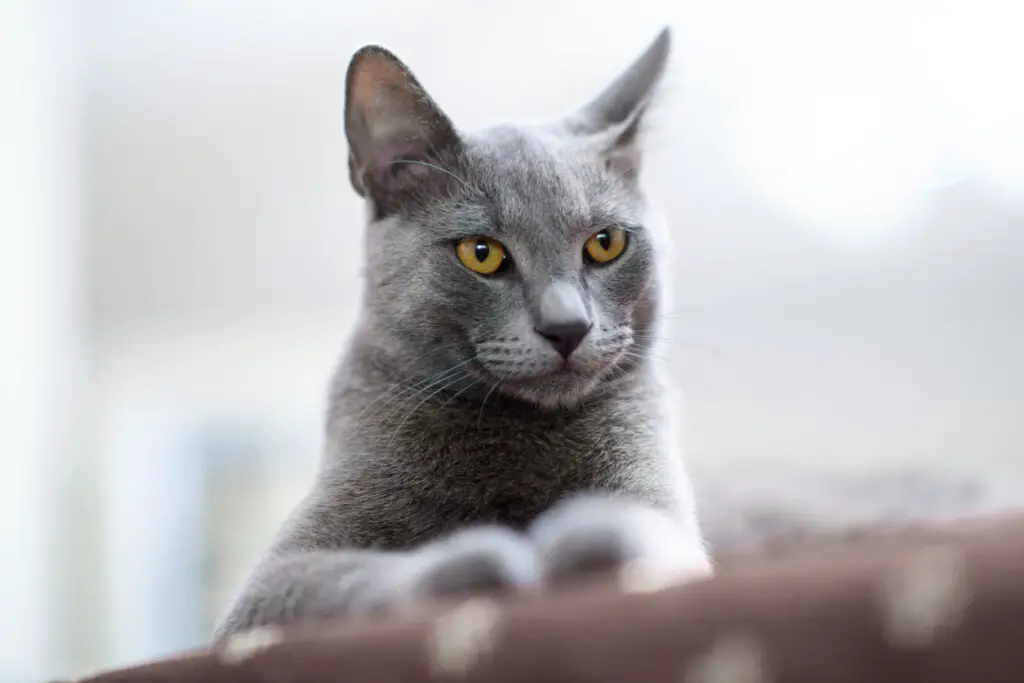
Russian Blues, known for their plush silver coats, can exhibit sudden aggressive behaviors. The Journal of Veterinary Behavior
reports they’re sensitive to environmental changes and prefer routine. They may lash out when their comfort zone is disrupted. Consistent handling and a stable environment help manage their potential for aggression.
According to the Cornell Feline Health Center, these cats are masters of subtle judgment. They’ll watch your every move with piercing green eyes, making you wonder if you’ve somehow offended their delicate sensibilities. Russian Blues’ intelligence means they can hold grudges and may retaliate for perceived slights. Respect their personal space and provide plenty of mental stimulation to keep them content.
Himalayan
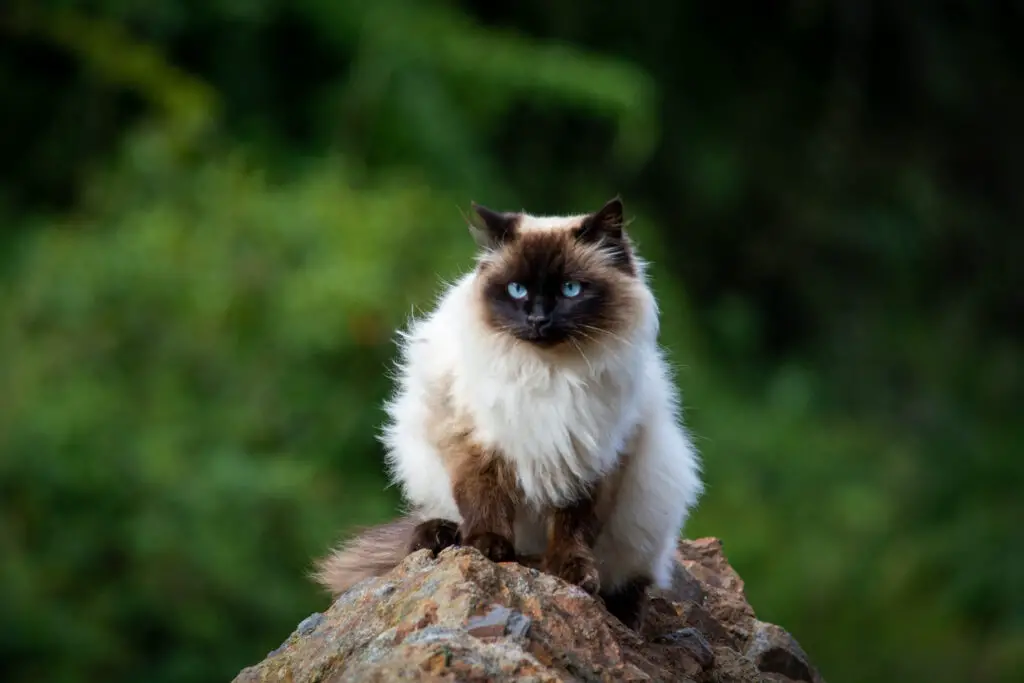
Himalayans combine the laid-back nature of Persians with the vocal tendencies of Siamese. The Journal of Feline Medicine and Surgery
notes this mix can result in unexpected aggressive outbursts. They may become overstimulated during grooming, leading to biting. Regular, gentle grooming sessions from an early age help manage this tendency.
Research in Animals (MDPI) suggests these cats’ flat faces can lead to breathing issues, potentially causing irritability and aggression. They expect royal treatment, from gourmet meals to plush bedding. Provide a calm environment and be attuned to their physical comfort to minimize stress-related aggressive behaviors. Be prepared for a lifetime of grooming – that luxurious coat doesn’t maintain itself.
Savannah
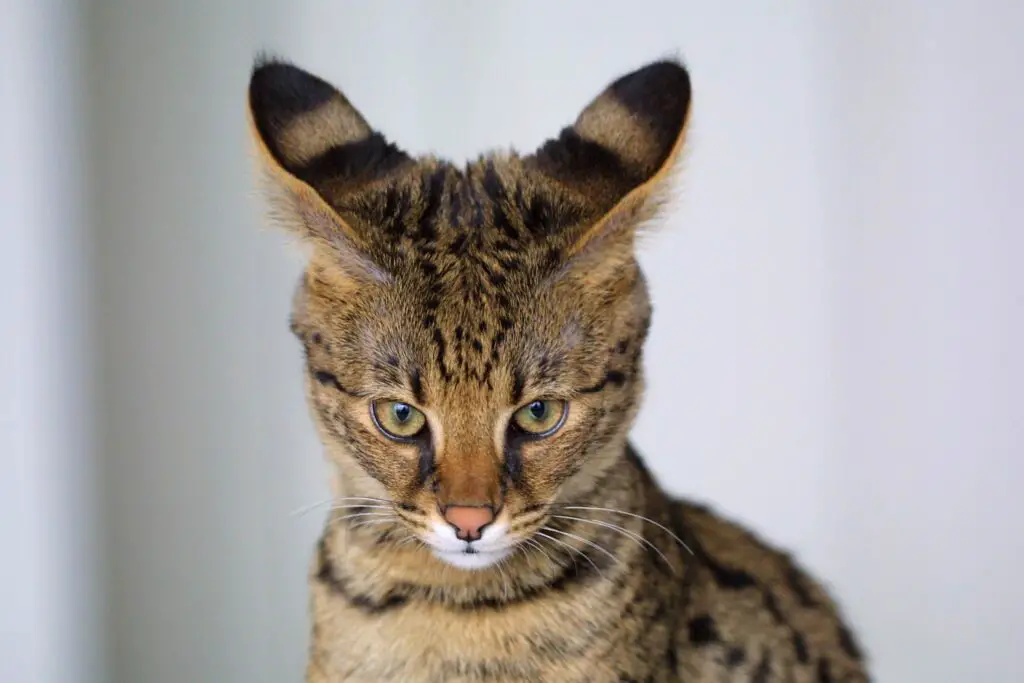
Savannahs, a cross between domestic cats and African Servals, rank high in aggressive tendencies. The Journal of Veterinary Behavior
reports they have a strong prey drive and high energy levels. They require extensive space and stimulation to prevent destructive behaviors. Early generations can be particularly challenging and may not be suitable for typical home environments.
The Cornell Feline Health Center warns that these cats’ wild ancestry means they may view smaller pets as prey. Their impressive jumping ability and strength can lead to unintentional injury during play. Extensive socialization and robust environmental enrichment are crucial for managing their wild instincts. Potential owners should be aware that some locations have restrictions on ownership due to their hybrid status.
American Wirehair
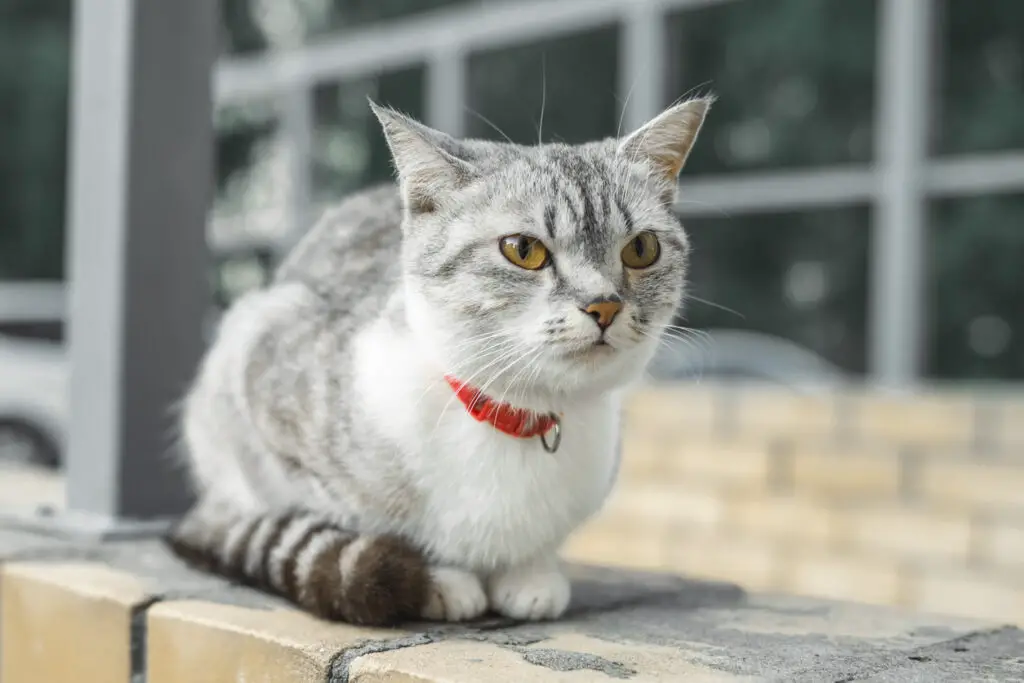
American Wirehairs can display aggressive tendencies despite their friendly nature. The Cornell Feline Health Center
reports their strong hunting instincts often lead to rough play and low tolerance for unwanted handling. Their unique wiry coat, resulting from a 1966 genetic mutation, can make petting uncomfortable if done incorrectly.
According to the Journal of Feline Medicine and Surgery, these cats are sensitive to overstimulation, potentially leading to sudden swats or bites. Their coarse, springy coat feels like steel wool, requiring patient owners who appreciate their blend of affection and independence. Interactive toys simulating prey can help channel their energy positively.
Singapura
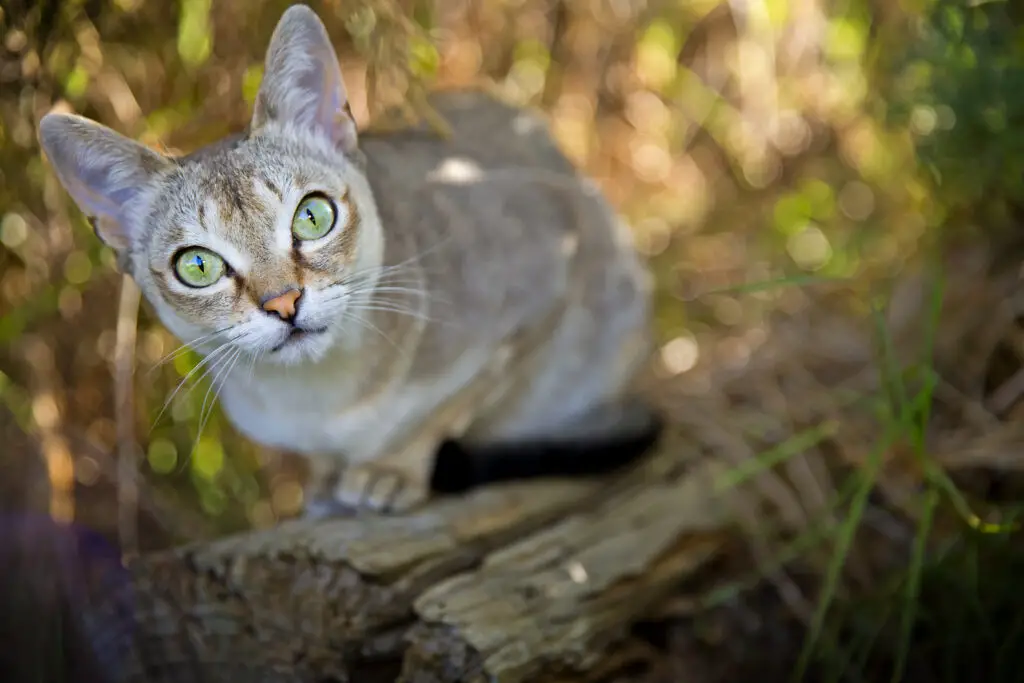
Singapuras, the world’s smallest cat breed, pack significant attitude. The Journal of Veterinary Behavior notes their high energy and demanding nature can lead to aggressive behaviors if not properly managed. Known for persistent vocalizations, they may become destructive if their needs aren’t met.
Research in Animals (MDPI) warns not to underestimate their exercise and mental stimulation requirements due to their small size. Singapuras’ intelligence and curiosity can result in mischievous behaviors that may escalate to aggression. They’re easily startled and may react with surprising ferocity, often trying to prove they’re as tough as larger cats.
In conclusion, while these 15 cat breeds may have reputations for aggression, it’s crucial to remember that each cat is an individual. With proper socialization, training, and care, even the most challenging breeds can become loving companions. Potential owners should be prepared for high-energy, high-maintenance pets that require ample attention, stimulation, and patience. Before adopting, thoroughly research your chosen breed and consider consulting with a veterinarian or animal behaviorist. Understanding and meeting your cat’s unique needs is key to fostering a harmonious relationship, regardless of breed. With commitment and the right approach, you can enjoy the spirited companionship these fascinating felines offer.


